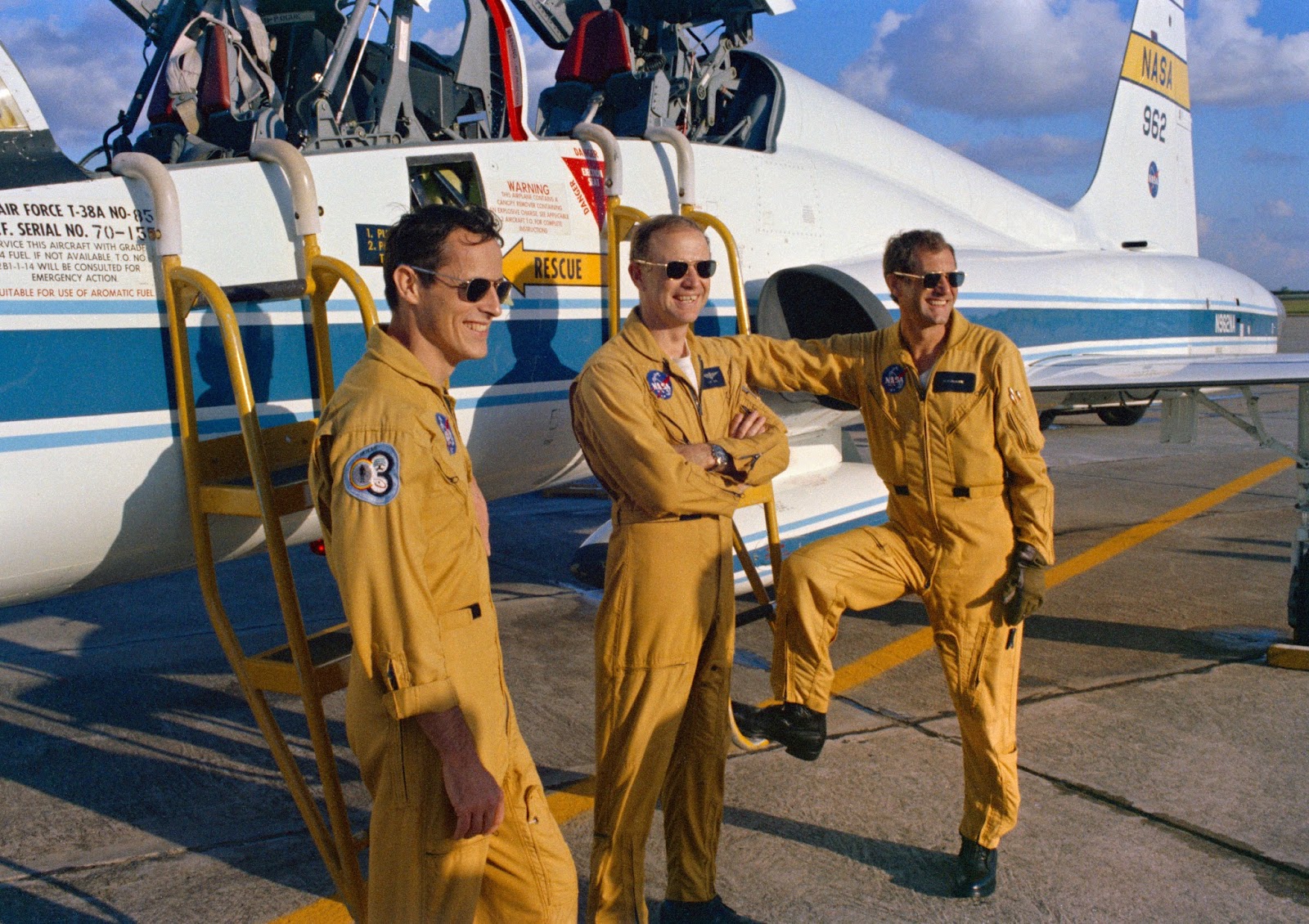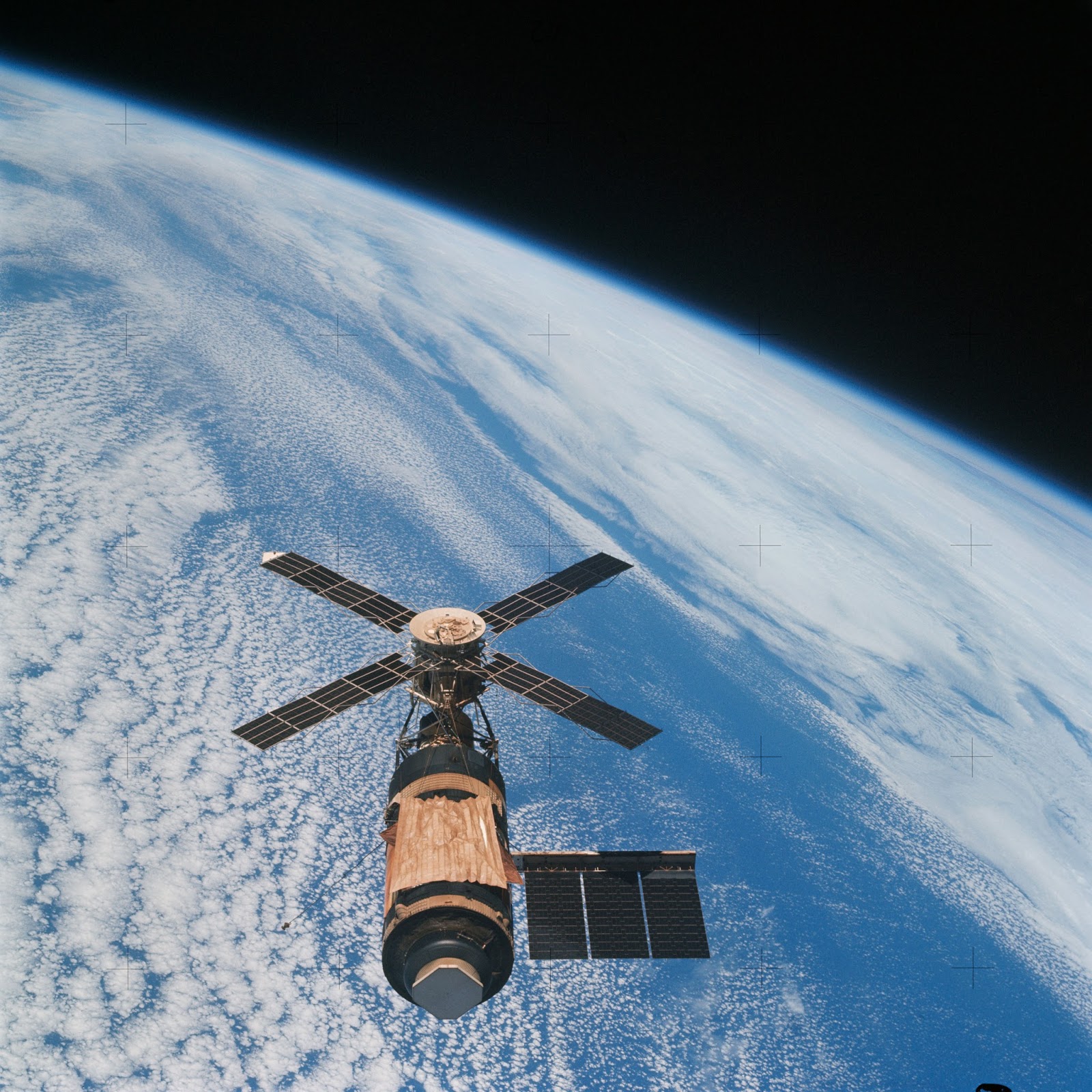In the first of a series called “Space Myths Busted,” I thought I’d take on the oft-reported myth that there was some kind of “strike” or “mutiny” in low-Earth orbit during the Skylab 4 mission, crewed by commander Gerald Carr, pilot William Pogue, and science pilot Ed Gibson. While the crew faced challenges due to being over-tasked early in the mission, nothing like a “mutiny” ever occurred, and with respect to the three crew members, it’s time to set the record straight. Read more after the jump…
The book Homesteading Space, written by David Hitt, Owen Garriott, and Joe Kerwin (the latter two authors are Skylab astronauts), has the best account of what actually went down in the early days of the Skylab 4 mission. I’ll insert no big spoilers for those who haven’t yet read this book, but I’ll touch on some of the factors that led to the alleged “mutiny” that didn’t happen.
The Skylab 3 crew, according to Homesteading Space, was dubbed a “Supercrew” following their return to terra firma in 1973; they had achieved 150% of their mission goals. This excited scientists and mission planners, who discounted the fact that the SL-3 crew was able to achieve this Herculean work pace only by the end of their mission, as during the first few days they were beset by space sickness (not as well-understood in 1973 as it is now).
The Skylab 4 mission was planned to be the last jaunt to Skylab, America’s first space station, and this crew’s activities were scheduled similarly to the final busy days of the previous mission. According to the book, flight director Neil Hutchinson related in a NASA oral history interview everyone wanted to get as much as possible out of this last hurrah: “The train was leaving the station, and all kinds of experiments and experimenters were running for a seat.” In short, the crew was over-scheduled before they even left the launch pad on Nov. 16, 1973.
Before long, the crew became aware of the problem. In the book, Carr stated, “The schedule caught up with us. We found that we had allowed ourselves to be scheduled on a daily schedule that was extremely dense. If you missed something, if you made a mistake and had to go back and do it again, or if you were slow in doing something, you’d end up racing the clock and making more mistakes, screwing up more on an experiment and in general just digging a deeper hole for yourself.” Thus the crew was on a “very tight” (Carr’s words) schedule, and understandably they began making mistakes. Carr added, “We finally reached a point where we just had to take a day off.”
The crew was quickly becoming drained, and they agreed to do makeup work. There was no strike; the crew still did some simple experiments, with Gibson even working at the Apollo Telescope Mount (ATM) panel. (Later, Gibson’s pioneering solar physics work on Skylab would yield a seminal NASA publication called A New Sun.)
 |
| Gibson, Carr, and Pogue pose in front of a NASA T-38 prior to their Skylab 4 mission in Nov. 1973. They became prime players in a controversy that never happened. Photo Credit: NASA |
Moreover, an innocuous mistake contributed to the myth that a “strike” of sorts had occurred on Skylab. According to Gibson: “In an effort to increase our efficiency, we occasionally would have only one of us listening to the voice traffic from the ground and responding to it while the other two of us turned off our radios and worked without interruption. We each signed up for an orbit as the radio-response guy. Well one day we made a mistake and for a whole orbit we all had our radios off!” This minor incident further contributed to the mistaken belief that the astronauts had gotten “crabby,” and had refused to speak to ground controllers.
Even after their day off, things did not improve; the crew eventually had what Carr described as a “séance” with ground controllers. Over a U.S. pass, the crew communicated their concerns; during the next U.S. pass, the ground controllers communicated theirs. According to Carr, “The next morning they sent down a teletype message in which they recommended quite a few things.” The crew’s schedule was rearranged, with housekeeping chores put on what was described as a “shopping list,” and no major experiments would be scheduled following dinner. Carr related that this new way of working went “beautifully.”
A National Geographic article on Skylab missions, published in Oct. 1974 months after the end of the SL-4 mission, further confirms that no mutiny occurred. Skylab Program Director William Schneider is quoted as saying, “The basic problem belongs to us here.” The article continues:
Crew and ground have a heart-to-heart discussion, and the air clears. “A guy needs some quiet time to just unwind if we’re going to keep him healthy and alert up here,” Carr tells the ground. “There are two tonics for our morale – having time to look out the window, and the attitude you guys take and your cheery words.”
Gibson, who was actually there on Skylab, set the record straight with his own words in Homesteading Space:
Problems that surfaced early in our mission were created by competent, well-intentioned people. The exceptions were the dramatic stories fabricated by the media and later re
peated and exaggerated in a book on Skylab and a Harvard Business School study. There was no “strike in space” by any stretch of the imagination. What could we threaten to do, go live on the moon? If any of these writers had gotten their information from just one of us, the crew or other people directly involved, responsible reporting and validity would have prevailed over expediency and sensationalism.
Skylab 4 went on to be a resounding success despite its challenging start, bringing back tons of biomedical data, results from various experiments, Earth observations, and a new perspective on solar physics as powerful flares were able to be observed on-orbit. The crew logged a then-unprecedented 84 days in space, becoming long-duration spaceflight champions.
And no, there was no mutiny.
Sources:
- Canby, T. (1974, October). Skylab, Outpost on the Frontier of Space. National Geographic, 146(4), 441-469.
- Hitt, D., Garriott, O., & Kerwin, J. (2008). Homesteading Space: The Skylab Story. Lincoln, NE: University of Nebraska Press.
Emily Carney is a writer, space enthusiast, and creator of the This Space Available space blog, published since 2010. In January 2019, Emily’s This Space Available blog was incorporated into the National Space Society’s blog. The content of Emily’s blog can be accessed via the This Space Available blog category.
Note: The views expressed in This Space Available are those of the author and should not be considered as representing the positions or views of the National Space Society.



















